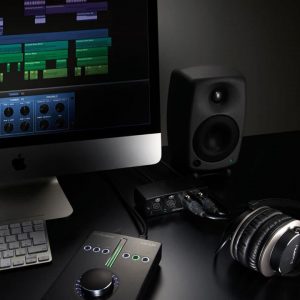Practical Advice to Make Your Tracks Sing
Recording Vocals image: Roland Recording Class with Souliance
Author: Paul White, Editor-In-Chief for Sound on Sound and Roland UK Features Team
The main problems associated with making a great recording can be broken down into two areas — the sounds you record and the way you mix them. Paul White of Sound on Soundexplains how this applies to recording vocals.
Quick Tip…
Vary the vocal sound in the choruses. This could be as simple as changing the reverb or delay settings or as complex as adding multiple vocal layers and harmonies. Double tracking a part by singing it twice on two different tracks and then mixing the results is a popular trick, and if the singer doesn’t hit quite the same timing second time around, you can always use your DAW’s editing tools to slide any errant backing parts back in line with the main vocal.
Recording Vocals at Home…
Vocals recorded at home often suffer because of the space they are recorded in. Your mics and recording gear may be fine, but if the room gives everything a boxy sound, then that’s what you’ll record. Most vocals are recorded using a cardioid pattern (unidirectional) microphone, but these mics are also still quite sensitive at the sides. If you can hang up a duvet behind you and curve it around the sides of the mic too, you’ll kill most of those annoying room reflection and get a much cleaner recording. Those curved commercial screens that fit behind the mics also help, but I’d say the absorber behind the singer makes the most difference as that traps reflections from the walls that might otherwise get into the sensitive front side of the mic. If you use both a duvet behind the singer and a commercial screen behind the mic, you should get results to rival those of a professional vocal booth. And don’t forget to put a pop shield three to four inches in front of the mic as vocal popping is almost unavoidable without one. A foam pop sock will kill the tone but not the pops!
Recording Tips – 2 of 4
Get the full PowerOn article available for free at Apple Newsstand, Google Play, and the Amazon Appstore, and stay tuned to the Roland U.S. blog for more recording tips as detailed below.
- Overview
- Recording Vocals (this post)
- Mic Placement
- Post Production
Do you have recording tips that you would like to share? Please leave us a comment. In the meantime, here is a video of the BREVERB SONAR plugin on a vocal track.






